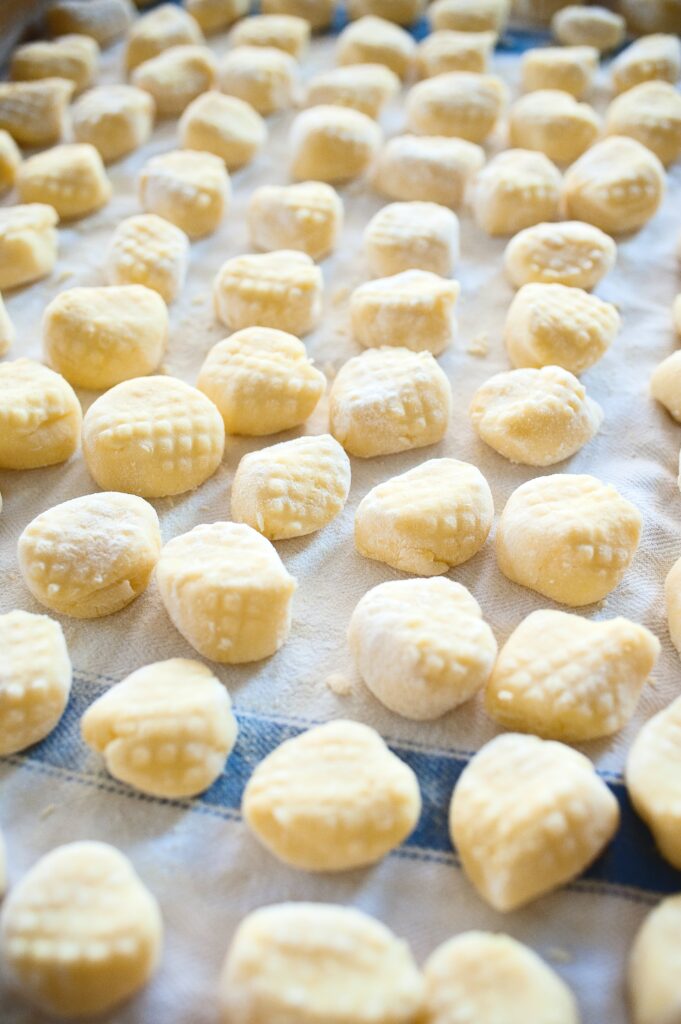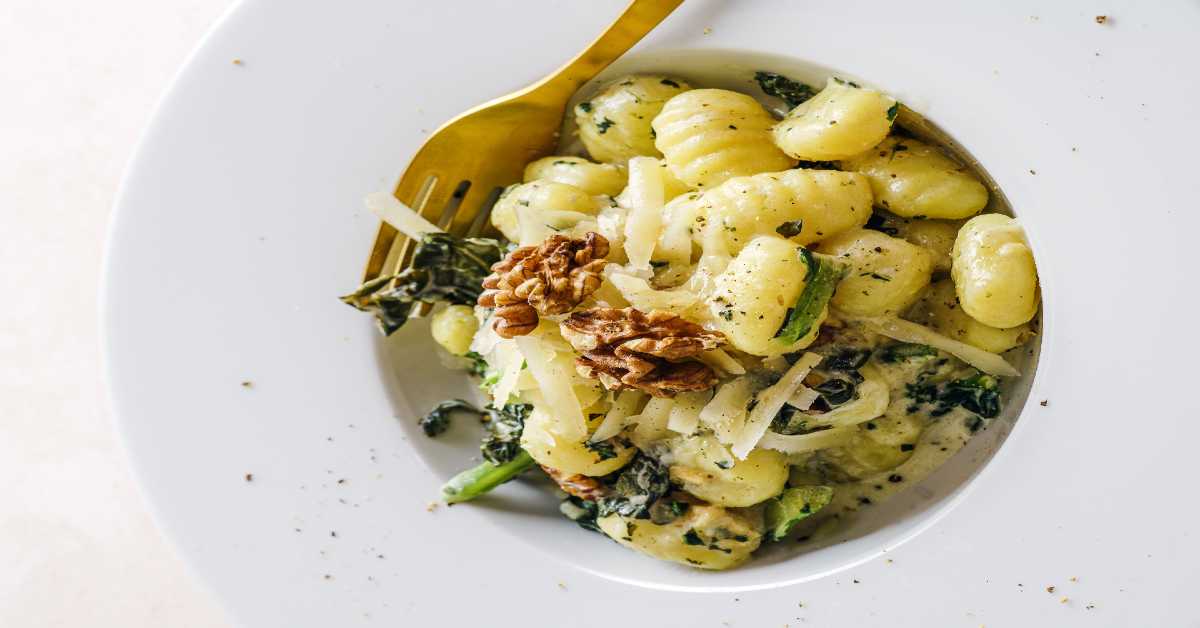There are numerous locations where the origins of Italian gnocchi can be directly traced. The word “gnocchi” comes from the ancient Lombard word “knot,” which was then used to refer to any circular ball of dough. The history of this form of pasta has been further disputed in several countries, and there are many regional differences.
Despite the fact that most people associate these dumplings with northern Italy, they are actually made all over the peninsula in different ways and with different base ingredients depending on where they are being made: flour, corn meal, semolina, bread, chestnut flour, ricotta, or vegetables like pumpkin, spinach, or the traditional potato.
Depending on local gourmet tastes, toppings include tomato sauce, meat sauce, basil pesto, cheese fondue, tomato, and mozzarella, or plain brown butter and sage. Although they are the most well-known, potato gnocchi were neither the only nor even the first; it took centuries for tubers to reach Europe, but the Romans were the ones who first created balls by combining water and flour that were then baked in boiling water.
History
The most famous and most popular potato gnocchi dates back to the 16th or possibly 17th century, long after Spanish explorers introduced potatoes to Italian cooks from South America. Since the Renaissance, however, other forms of gnocchi have been available as an elegant meal for special occasion banquets.
In 15th-century Lombardy, zanzarelli was a type of gnocchi made with bread, milk, and crushed almonds. Bartolomeo Scappi’s 1570 cookbook contains a recipe for ‘gnocchi’, a dough made of flour and breadcrumbs mixed with water and passed through the holes of a cheese grater. A few years later, the recipe was found and modified to include water, flour, and eggs, and it has given the name malfatti. The word “gnudi,” which means “badly cooked,” is still used by Tuscans to describe their spinach and ricotta dumplings.
In the 19th century, Pellegrino Artusi, known as the “grandfather” of Italian cuisine, published a recipe for potato gnocchi. That recipe involved a woman’s story of not having enough flour and the gnocchi evaporating in the pan she was cooking. used to hold them together. After shaping the gnocchi into small pieces, scrape them with the back of a cheese grater to give them texture.
Using the tines of a fork or certain wooden utensils to create this texture ensures that the overall smooth dumpling has little nooks and crannies where the sauce hides, ensuring full flavor in every bite.
Recipe for Tasty Gnocchi

Ingredients
- pound potatoes (not new potatoes; clean but not peeled)
- flour,
- Salt as per requirement and 1 medium egg (room temperature)
Sauce
- cups of olive oil (40 grams)
- teaspoon salt and 2 big, minced garlic cloves
- Oregano,
- Basil leaves, cut into five pieces
- a few flakes of spicy pepper (if desired)
- 1 can of Pelati tomatoes with sauce, with no additional tomato ingredients.
- cups of water
Instructions
- Boil the potatoes in a large pot until soft, remove from the pot, cool, and peel. Then it goes through the potato ricer.
- Mix the flour and salt, place on a flat surface, make a depression in the middle, add the potatoes and eggs, and knead with your fingers to form a soft dough. keep fingers from sticking
- Cut tiny portions of dough into ropes and into 3/4-inch (2 cm) pieces on a lightly floured board. Then, slide each piece onto a fork and squeeze it slightly (but not too hard). To prevent them from sticking to one another, sprinkle with a little flour and toss. Prior to cooking, let the gnocchi rest for 20 minutes.
- Make the sauce while the gnocchi is resting. Add olive oil, tomato, salt, garlic, oregano, basil, red pepper flakes, and water to a large pot, stir, cover, and simmer over medium heat until thickened. Uncover and thicken for the last few minutes.
- Cook the gnocchi in a large pot of boiling salted water until the gnocchi floats to the top. Drain, add to cooked sauce, add pasta water, cook for 30 seconds, and mix gently. Serve immediately with freshly grated Parmesan cheese, if desired.
various sauces for gnocchi
There are several ways to serve gnocchi, but perhaps the most popular is a simple tomato sauce. You can also toss it with pesto, butter, sage, or a simple cream sauce.
How to make Gnocchi that is more substantial?
- Use a potato with red skin.
- Peeled potatoes are hard to absorb water, so please boil them.
- Because they become more sticky as they cool, quickly peel the potato and run it through a potato ricer.
- By inserting a fork and a knife, you can easily peel potatoes.
- But it’s best to wait until the riced potato is cool before combining it with the flour (or denaturation may occur).
TIPS
Place in salted boiling water, stir several times, and observe carefully. Once it floats to the surface, it doesn’t take long to cook for a minute or two (sometimes less). Please remove it immediately. If you cook it for a long time, it will become mushy.
various methods of serving them
You can eat gnocchi plain or with your preferred sauce. Like traditional Italian baked pasta dishes, it can also be further baked in the oven. Two of our favorites from him are the Baked Creamy Cheese White Sauce Gnocchi and the Baked Gnocchi with Double Cheese Tomato Sauce. Either or both are worth trying.
Storage Tips
- Potato gnocchi should not be at left uncooked (covered) for more than a few hours. It may take a little longer to cook as it is a little dry in the air.
- Refrigerate overcooked gnocchi and store them in an airtight container. It can be further stored in the refrigerator for 3 days.
- Gnocchi can also be further frozen. Place the uncooked gnocchi on a cookie sheet in the freezer and let stand for about 20 minutes before placing it in an airtight freezer bag. The expiration date is about 1 month.
- For cooking, there is no need to defrost, just add to boiling salted water.
